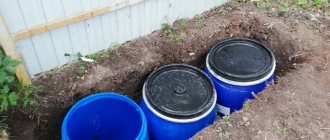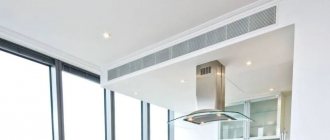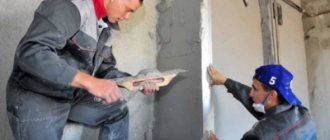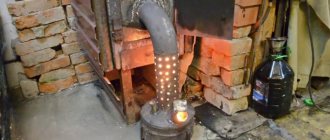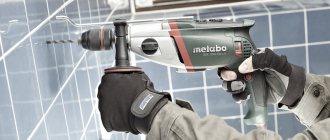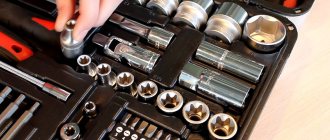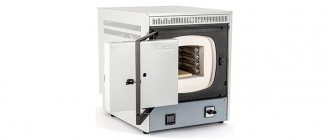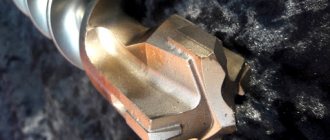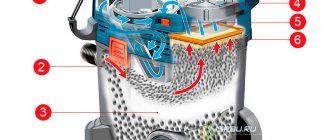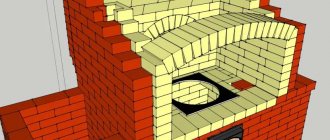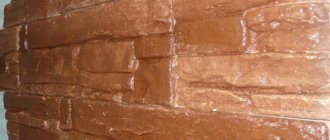Waterproofing is an integral stage of repair work. The durability of structures and comfortable operating conditions will depend on the quality of the protective material. By giving preference to waterproofing with dry mixtures, you will be reliably protected from the adverse effects of moisture in your apartment (house). In this review, we will consider all types of material and the features of its use.
Penetrating waterproofing for concrete: deciding on the option
The foundation is one of the most significant elements in the construction of buildings, and its protection from moisture and groundwater infiltration is sometimes crucial. It is equally important to ensure that the base is protected from moisture when laying various floor coverings. For these purposes, it is most effective to use penetrating waterproofing. These are mixtures of special cement and additives, which, upon contact with concrete, seep through the smallest pores and cracks, fill voids and crystallize upon contact with water. When using these mixtures, the concrete base becomes waterproof and acquires additional frost-resistant qualities.
General characteristics
The main advantage of dry mixes is their compatibility with almost all surfaces. They are extremely easy to use and do not require special equipment or skills. Typically, this is a dry powdery material. By diluting the mixture with water or special compounds, a plastic waterproofing mass is obtained.
The price of dry waterproofing is determined by its composition and purpose. A wide variety of combinations of fillers and additives makes it possible to choose the best option for any purpose, be it insulating a bathroom or a swimming pool.
Almost all dry waterproofing mixtures consist of three components:
- Binder (cement, resin).
- Fillers (mica, perlite, quartz, pigments).
- Chemical additives (plasticizers, polymers, hardening accelerators, water-repellents).
The manufacturing technology involves grinding the components to the required size. After this, the composition is dried, mixed in the required proportions and packaged in bags of various sizes.
Penetrating waterproofing - luxury or necessity
This building material serves to protect concrete structures, making them waterproof. An insoluble insulating substance penetrating into the upper porous layer of concrete displaces the liquid, filling the pores.
By adding waterproofing components to the composition of the solution, you can modify the material being processed:
- Protection of reinforced concrete reinforcement from corrosion;
- Restoration of technical and operational properties of old concrete;
- Protection against mold and mildew;
- The chemical resistance of the material is improved.
Penetrating waterproofing is used not only at the initial stage of construction, it can be used when repairing or restoring a structure. Very often it is used when processing buildings that are already in use.
It is also used for application from the inside - it withstands back pressure perfectly. The resulting crystals do not allow moisture to enter the concrete, but also do not block the passage of air; the concrete can “breathe.” The use of penetrating waterproofing when constructing a foundation protects it from the effects of an aggressive environment.
Important recommendation! When building or renovating, try to waterproof the foundation, this will extend the life of your home.
Video: Penetrating waterproofing "PENETRON"
Injection waterproofing - types
Injection or liquid is one of the varieties of penetrating. It also serves to protect surfaces from moisture. This material has excellent technical characteristics and is durable.
In addition to protecting the structure from moisture, injection insulation also perfectly retains heat and resists temperature changes and corrosion. The main types of injection insulation are liquid glass and liquid rubber.
Liquid rubber
Main qualities of liquid rubber:
- Environmentally friendly;
- Has excellent adhesion;
- Easily restored;
- Simple application process;
- Highly elastic and flexible.
Liquid rubber is applied using special equipment; this does not require special training or knowledge; the most important thing is to distribute the material evenly. The surface after application remains flat and smooth without seams.
Liquid glass is a solution of potassium and sodium silicate.
Everyone is familiar with this type of injection insulation; in fact, it is nothing more than office glue. Liquid glass is usually added directly to concrete, which significantly improves its characteristics:
- Its moisture resistance improves;
- Becomes stronger and harder;
- Increases resistance to mechanical stress.
No special equipment is required to use it. The main thing is to maintain proportions when mixing concrete and liquid glass. It can also be used not only as an additive to concrete, but also in its pure form. Liquid glass will reliably protect the structure from temperature changes, sunlight, wind, etc.
On a note! Liquid glass will protect the surface of the structure for 5 years. After which the procedure will have to be repeated.
Penetrating waterproofing - recommendations for use
Injection waterproofers, like all other types, are not without contraindications and have some recommendations for use. In order to provide reliable and durable protection to the structure, it is necessary that the work be performed at a high level.
Here are some basic rules:
- Cannot be applied to gypsum and limestone surfaces;
- If frost is expected in the near future (24 hours) or the temperature is not higher than 5 degrees, it is strictly prohibited to apply waterproofing;
- Do not treat icy or frost-covered surfaces;
- Liquid insulation is applied to the surface thoroughly, but without the formation of puddles or smudges.
Attention! Work on applying penetrating waterproofing should only be carried out with rubber gloves.
Penetrating waterproofing for foundations and masonry is a necessary material for renovation or construction. The main thing to remember is that no matter what type of waterproofing you choose, you can only count on quality work if you adhere to all the rules and regulations.
Even the highest quality and most expensive material will not be able to protect the foundation and walls if the technological process was disrupted during application.
Watch the video: Crystallisol penetrating waterproofing
Video description
About mistakes when waterproofing premises in the video:
Stages of work
For walls there is also a preparatory stage, which has almost the same appearance as for the floor:
- cleaning of old coating;
- correction of surface defects;
- applying a primer with hydrophobic and antiseptic properties.
After the soil has dried, apply a waterproofing solution with a spatula or trowel and spread it evenly over the wall. And since this is not putty, a perfectly flat surface is not needed here - small unevenness and roughness is compensated by a layer of tile adhesive.
Even moisture-resistant drywall needs to be protected. Source finkarus.ru
The work of waterproofing a bathroom seems simple. But there are pitfalls here too. And most importantly, you need to choose the right scheme for using materials and have certain construction skills. Therefore, it is better to entrust such work to professionals.
Advantages and disadvantages of penetrating waterproofing
If we talk about the advantages of a penetrating product for protecting concrete from water, then it is worth highlighting the following advantages:
- Deep penetration waterproofing is suitable for almost all categories of structures (above-ground and underground).
- Waterproofing material can be applied to a concrete surface even after years of operation of the structure (often such waterproofing is used during the restoration of buildings).
- Since the material is anti-corrosion, the reinforced concrete structure will not be susceptible to rust. Protecting concrete from corrosion allows you to triple the service life of the building.
- Concrete does not need to be pre-dried before applying waterproofing to it.
- Waterproofing products can be easily applied using a sprayer or by hand.
Features of application
The technology of concrete waterproofing using a penetrating composition is suitable for processing any structures, regardless of their configuration and location - underground or above its surface. At the same time, the waterproofing material strengthens the concrete itself and also prevents the access of moisture to the reinforcing elements - reliable protection against corrosion extends the service life of reinforced concrete by 2-3 times.
The protective composition can be applied to concrete surfaces during the construction of buildings and structures, as well as to old structures during repair or restoration work.
Penetrating waterproofing for concrete from a dry mixture is being prepared. The liquid composition is sprayed or applied using hand tools. This allows you to create a seamless, seamless, protective coating over the entire surface of a structure of any shape.
Rolled and coating materials designed to protect against moisture are vapor-tight, and if they are laid or applied to concrete in the pores of which moisture has remained, this creates a favorable environment for the appearance and development of fungus. In contrast, penetrating waterproofing can be applied to wet concrete - all the moisture in the outer layer will be absorbed or displaced by the growing crystals as the cement sets.
Content
First, you need to understand what waterproofing materials are on the market today and how they differ from each other. Waterproofing is a dense waterproof layer that is applied to the surface of individual building elements to protect them from moisture. Materials that are used for waterproofing work are most often divided into groups depending on the method of their application. Waterproofing can be:
- painting;
- pasting;
- coating;
- plastering;
- penetrating;
- sprayed;
- injection.
To ensure high-quality installation of waterproofing, you should study the requirements and building codes, which will ensure high quality of the work performed.
Time-tested: painting, pasting, coating and plastering ↑
Painting waterproofing is a thin film that is obtained by painting the base with such compounds as bitumen, mastic, varnish, paint, etc. Of course, special water-repellent compounds are used, which are in liquid or plastic form. Modern painting waterproofing materials usually use bituminous mastics containing talc, asbestos, fluff lime, etc. High-tech varnishes and paints based on synthetic resins and plastics are very effective.
Among the materials for paint waterproofing, there are compositions based on:
- bitumen;
- rubber;
- acrylic;
- silicone;
- polyurethane.
Usually, before carrying out work, painting materials are slightly heated, depending on the manufacturer’s recommendations, but when working with bitumen mastics, the composition should be heated quite strongly, up to 170 degrees. Bitumen mastics are applied in two or three layers, the recommended thickness of each of which is 2 mm. For synthetic materials, a layer of 1 mm is sufficient.
Please note: It is not recommended to work with cold mastics if the ambient temperature is less than five degrees Celsius.
Gas flame spraying is also classified as a painting method for waterproofing work.
For adhesive waterproofing, special sheet or roll materials are used, which are glued using bitumen mastics, hot or cold. Thick synthetic resins are also suitable for installation of adhesive waterproofing materials.
To produce this type of waterproofing, rot-resistant materials are used, such as:
- metalloizol;
- broken glass;
- folgoizol;
- hydroisol;
- polyvinyl chloride and polyethylene films;
- reinforced asphalt mats;
- isol;
- brizol;
- glass roofing material, etc.
Rolled waterproofing is more convenient to use on horizontal surfaces. But rolls with a cardboard base, for example, roofing felt, glassine or roofing felt, are not suitable for use as adhesive waterproofing.
The panels are mounted with an overlap of 10 cm, so that the joints of adjacent elements do not coincide.
Tip: When working on horizontal surfaces, it is recommended to apply some of the material to the walls to improve the quality of the adhesive waterproofing. When working on a vertical wall, the surface should be carefully leveled, since a difference of more than 2 mm can cause deformation and damage to the insulating layer.
Coating waterproofing is used for brick, cement and concrete bases and is a one- or two-component elastic composition that is applied in several layers. This type of waterproofing is considered especially effective when used in basements, swimming pools, and also when eliminating active leaks.
Please note: mastics, sealants and bitumens are toxic and can only be used on dry substrates, so the use of two-component polyurethane compounds is more preferable.
The following are used as plaster waterproofing:
- cement plasters with mineral fillers or water repellents, which are applied in several layers 5–40 mm thick, they are suitable for rooms with high humidity: swimming pools, bathrooms, ponds, etc.;
- asphalt plasters made from cold or hot mastics, laid in 2-3 layers, the thickness of each is 2–4 mm, they are used on surfaces subject to excessive moisture or hydraulic pressure;
Advice: on vertical surfaces, such waterproofing should be covered with brick, concrete or plastered reinforced mesh. The horizontal layer is protected with a concrete or cement screed.
- cast asphalt compositions, which are hot mastic or mortar, which is poured between the base and the protective wall; when applied horizontally, the composition is covered with a screed.
Price
- Hyperdesmo polyurethane mastic - 650 rubles/kg;
- elastic waterproofing mastic Ceresit CL - 5200 rub. for 15 kg;
- two-component composition Sazilast-24 - 950 rub. for 6.6 kg.
The average cost of coating thin-layer waterproofing with the application of an armor layer is 600 rubles per square meter.
Modern coating waterproofing reliably protects structures from negative external influences, fills microcracks efficiently, is easily and quickly applied to any type of surface, and does not emit harmful substances or toxins during operation.
In accordance with building regulations, all bathrooms, which are rooms with “special operating conditions,” are subject to mandatory waterproofing. For this purpose, special coating compositions are most often used, which have a large number of advantages and are as simple as possible to apply independently.
The most effective ready-made mixtures
- The most famous penetrating waterproofing is the American PENETRON mixtures. They are very effective for new concrete structures and old concrete with cracks no larger than 0.5 mm. To close the cracks more, the surface of the walls and floors must be pre-treated with PENECRIT. If there are external pressure leaks (wells, swimming pools, wastewater treatment plants), the structure should be treated with a PENELAG hydraulic plug.
- OSMOSIL is a deeply penetrating insulation made in Italy, which is used in private and industrial construction. A special feature of using this mixture is the mandatory preliminary plastering of the surfaces of walls, floors and structures.
- Domestic mixtures HYDROTEX and HYDROHIT. They are divided into waterproofing materials for external use - marked U, and internal walls and floors - marked B.
- Very good materials in terms of price/quality ratio under the KRISTALLIZOL brand from the domestic manufacturer GidroStroyKomplekt. There are different types on sale: for new concrete surfaces - brush W12, for old ones - W12, for joints and seams - “Suture”, for restoration work - “Repair”, for walls of wells - “Hydroseal”.
- AQUATRON-6 (manufactured by Aquatron LLC - BHC, Russian Federation) is a double-action sealant that penetrates porous building materials to a depth of 40 cm.
The coating has a number of advantages:
- The high strength of concrete and the durability of special structures are improved. On average this happens by 10 percent.
- The substance is used during the construction of a building or during repairs. It is applied in different ways. In the first case, the outer surface should be coated, in the second, the inner surface.
- After applying the special agent, reinforced concrete structures do not rust or corrode.
- Thanks to the composition, the service life of the building being constructed increases.
- Withstands temperature changes well.
If such a coating is applied, the building continues to breathe. In this case, mold and other pathogenic microorganisms do not spread.
Device
There are many areas in the shower room that are exposed to moisture. They should be given as much attention as possible when waterproofing a room. This is, first of all:
- the floor where water flows, especially if it leaks into the concrete floor slabs of the cabin itself;
- the lower parts of the walls, because most of the liquid gets on them;
- the entire area around the sink, as well as risers and pipes;
- joints between the floor and walls.
A shower without a tray is a small separate corner in the bathroom. It contains the water supply outlet, as well as a hole for water drainage in the floor. The floor in such a shower is on the same level as the entire room.
In such a shower you need to do everything correctly, because the slightest mistake will make the waterproofing ineffective
It is very important to pay attention to waterproofing the drain. The drainage structure must be laid in the floor screed, where a recess is made. The rest of the space must be filled with concrete mixture
To check whether its waterproofing is done correctly, you need to pour a little water into the siphon
The rest of the space must be filled with concrete mixture. To check whether its waterproofing is done correctly, you need to pour a little water into the siphon.
In a shower cabin without a tray, a drainage drain must be installed. Its device consists of the following elements:
- a housing that has a vertical or oblique outlet;
- small decorative grille;
- siphon, which prevents unpleasant odors from entering the shower through the sewer or decorative grille.
If the drain is in the center of the shower, then the slope is made to the center from each side. And after this, the ladder grid is installed, which has dimensions of 10 x 10 cm. When installing the water ladder, it is necessary to take into account the slope of the floor. It should tilt evenly towards the drain and be at an angle. No more than three percent. This is done to prevent puddles from forming.
The drain can also be located in a corner of the shower floor. This is a less common option. In this case, it must be covered with tiles. A linear ladder grid is used here, which can be hidden. The floor is made with a slope of up to two percent.
Restrictions on use
Penetrating waterproofing is not suitable for treating structures made of lightweight porous concrete, gypsum-based materials, and asbestos cement. This is due to excessive consumption of the working composition, since these materials are characterized by low density and a large number of large pores. In these cases, it is more economical to choose a bitumen-based mastic or a polymer coating composition.
Also, penetrating waterproofing for concrete is not the best option when it comes to protecting foundations exposed to high vibration loads from moisture.
Such structures, in particular, include supports for automobile, railway and metro bridges, and overpasses. This is due to the fact that microcracks appear in the waterproofing layer and it becomes permeable to moisture.
Safety precautions
When carrying out work, it is necessary to observe safety precautions when interacting with gas burners and electrical equipment.
All workers must be equipped with personal protective equipment: helmets, respirators, goggles, rubber and cotton gloves, overalls, safety shoes.
It is unacceptable to allow working solutions to come into contact with the skin and mucous membranes . If this happens, wipe the composition with a clean rag, rinse the area with plenty of water and consult a doctor.
Methods of working with bitumen mastic
First, let's look at how to use “hot” mastic.
Working with hard bitumen
Before use, bitumen is heated in an iron container to a temperature of 160-170 degrees. Apply mastic to a dry base. A wet surface will cause boiling and blistering. As a result, coating waterproofing of the foundation will not make sense.
Melted briquettes are used to process both the entire foundation and only vertical surfaces. In the latter case, the mastic is supplemented with roofing felt or other rolled material.
Coating bitumen waterproofing has the following advantages:
- easy to use;
- is characterized by low cost;
- resistant to water pressure;
- durable.
- the material is flammable;
- afraid of mechanical damage;
- cracks at low temperatures;
- cools down quickly;
- lack of maintainability.
What materials will you need - what to choose from
Based on the method of application, materials for waterproofing barriers can be divided into two groups:
- painting, coating and impregnation;
- roll and sheet.
As the name suggests, the first three types are liquid or paste-like substances that can create a seamless, waterproof coating.
Roll and sheet materials are glued to the surface in the form of thin sheets, overlapped or end-to-end, with welded, soldered or glued seams.
Typically, when creating a waterproof barrier, not one, but two or three materials are used in combination. And this set of tools is determined by the selected waterproofing scheme.
Kneading
In order for the fruits of your work to last as long as possible, you should adhere to the recommendations for proportions and mixing the mixture.
Each manufacturer indicates the necessary mixing conditions, but there are also basic rules, such as:
- The mixture is first added to the cooking container, and then water. As you add, you need to mix everything thoroughly;
- Maximum homogeneity of composition;
- After cooking, let the mixture sit for 5-7 minutes;
- Optimal temperature for work is +10 – +25 degrees Celsius;
- When preparing a new mixture, it is necessary to remove the old one from the container;
- Waterproofing must be applied promptly.
Application
- The humidity in the room should be approximately 60%, this will allow the mixture to harden as efficiently as possible;
- The composition can be applied with a spatula or brush;
- The time after which waterproofing can be treated depends on the thickness of the layer;
- If concrete waterproofing is used, a period of at least 25-30 days must pass after its application.
The best option for protecting floors from water
Numerous methods of installing floor waterproofing have a single goal - creating a continuous coating, shaped like a pallet with 10-20cm sides on the walls. A kind of container made using this method will collect condensation flowing down the walls in streams, spilled and splashed water. A monolithic layer of waterproofing will not allow moisture to enter the ceiling and will prevent destruction of the base. At the same time, it will get rid of rot, the spread of fungi, and the harmful aromas emitted by these unpleasant representatives of the biosphere.
There is one goal, but there are really many ways to achieve it. In fact, choosing the best option without knowing the specific technical conditions is not realistic. The choice of the most suitable waterproofing, the type of which determines the technology of its construction, depends on:
- on the condition of the rough surface being processed;
- from the materials from which the floors are made;
- from the time allotted for the complete arrangement of the floor;
- from number of storeys;
- from the ability to reduce the height of ceilings and from a number of other nuances that can only be identified while on site.
The choice can be influenced by the area of the room, the complexity of its configuration, the presence of a hair dryer or burner and the ability to use them. Such significant arguments as the cost of the material and the complexity of execution cannot be ignored.
It is highly doubtful that any technology will meet all the conditions presented, but after carefully assessing the pros and cons, the optimal method can still be selected.
Coating insulation: properties
It may seem that the properties of impregnating and coating type insulation are similar. But the mechanics of their work are actually different. Impregnated insulation has a hydrophobic effect on cracks and other deformations. Coating waterproofing works directly on the surface.
Such materials for waterproofing concrete have the following properties:
- increased adhesion to the processed material;
- high water resistance;
- flexibility and resistance to stress.
There are many requirements and often they contradict each other: this predetermined the emergence of a huge number of types of insulation and other mixtures.
A little history
Fat, which people obtained from the entrails of animals, was used as the initial waterproofing. But due to the high cost of this material, a replacement had to be found: ancient builders began to use vegetable fats. The low cost of production and production, coupled with high performance, did their job; this material began to be used everywhere. The most striking representatives of this type of insulator are bitumen and tar. For concrete, waterproofing materials of this kind are of no small importance. They laid the foundation for the creation of coating and roll waterproofing technology.
Main components
The composition of the dry mixture for waterproofing includes the following components:
- sand (special, seeded, of a certain grain size)
- high grade Portland cement
- polymer additives
- chemical special microelements that can significantly increase frost resistance, increase plasticity, resistance to external influences and provide the necessary hydrophobic characteristics
As a rule, manufacturers do not disclose information about all the components contained in dry mixtures until the last minute; such information is classified as a trade secret.
You can buy high-quality concrete mixtures for various surfaces, both domestic and imported. The price of imported samples is usually higher, but the quality of domestically produced mixtures is not much inferior to competitors, and is cheaper.

